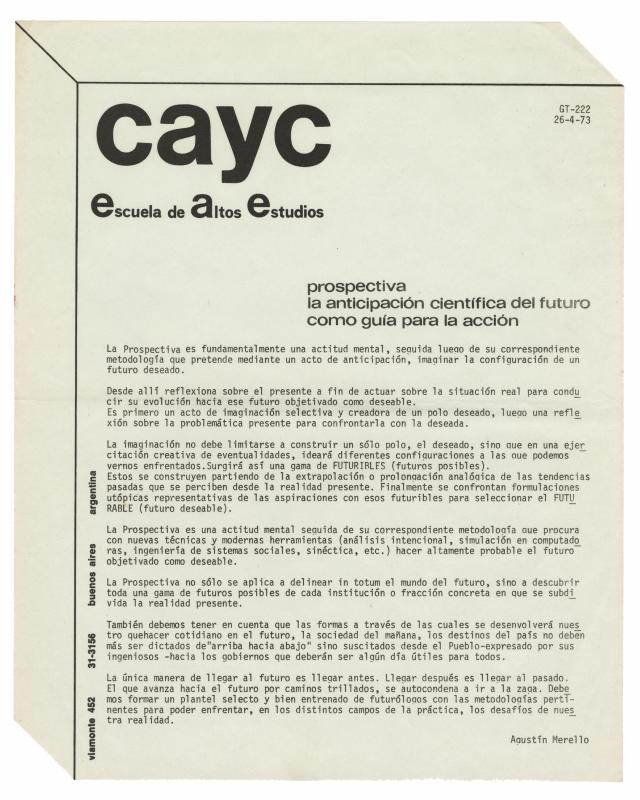Ever since it was founded, the CAYC (Centro de Arte y Comunicación), helmed by the cultural promoter, artist, and businessman Jorge Glusberg, was intended as an interdisciplinary space where an experimental art movement could flourish. The establishment of collaborative networks connecting local and international artists and critics played an important role in this process. In addition to the exhibitions, a program of different activities exposed attendees to the latest in scientific thinking. According to Glusberg, the coordination between theoretical thinking and artistic practice was an essential part of social change.
During the military dictatorship of General Juan Carlos Onganía, the CAYC became a cultural home for the Fundación de Investigación Interdisciplinari,a a space that welcomed a group of dissident professors from the Facultad de Arquitectura y Ciencias Exactas de la Universidad de Buenos Aires after the military takeover of the university in what came to be known as “La Noche de los Bastones Largos” in June 1966. In its early years the center organized a variety of activities with intellectuals that contributed to the circulation of ideas from different disciplines (analytic philosophy, mathematical logic, epistemological problems, psychology, semiotics, and linguistics), which had been excluded from official circles.
The center’s interest led to the creation of the Escuela de Altos Estudios (EAE) in January 1973 (GT- 201; doc. no. 1478752). Though several events of this kind had been held on previous occasions, some of which were closely involved with the Sociedad Argentina de Análisis Filosófico (SADAF), the creation of the school provided a space where ideas could be discussed with academics and intellectuals.
Agustín Merello became involved in the CAYC in the early days of the Escuela de Altos Estudios (EAE), where he was a member of the Research and Exhibitions Committee (GT-210; doc. no. 1478194, GT-222; doc. no. 1478769). He presented seminars in which he endorsed a “prospective” model that he described as “a scientific look into the future to be used as a guide to action.” The text in this newsletter refers to that model and was part of the strategies for the promotion of activities begun in May of that year.
This newsletter invites readers to a seminar that will discuss the “prospective” concept of looking ahead. The goal is to subsequently organize groups to discuss the future based on specific subjects. It should be noted that some of the CAYC’s projects were in line with the Stockholm Conference in 1972—which was also known as the First Earth Summit—that produced a statement that addressed the emerging environmental problems (such as pollution and ecological degradation). The center thus sought to draw attention to the possibilities suggested by new theories for artistic activity, especially those that supported its program of experimental activities and explorations.

